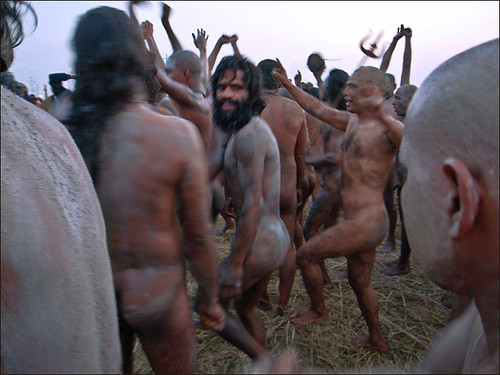
The Shastarvidiya websites claim that the fighting art that they teach is Hindu-Sikh. That it is ancient and has come from the Shiva Akhara. That it is original, and pure. Please visit the website for confirmation.

There are a number of questions that arise:
1. If the combat arts of the Sadhus was so good, why was India invaded, and plundered for over 800 years?

2. Why was it that until the Guru sent Banda Singh Bahadur there never had been conclusive victories against the Moghuls?
Answer:
The Indian fighting art was out of date, the weapons were poor, and the Moghul tactics and technology was superior. The Guru therefore revealed new innovations like Mool Pentra, weapon construction, formations, tactics and strategies that had not be seen before. This was original and unique to the Sikh Panth. This is what real Shastarvidiya, or Jhatka Gatka is.
Therefore it seems that the use of the terms on the shastarvidiya.org website has other motivations.

2. Why was it that until the Guru sent Banda Singh Bahadur there never had been conclusive victories against the Moghuls?
Answer:
The Indian fighting art was out of date, the weapons were poor, and the Moghul tactics and technology was superior. The Guru therefore revealed new innovations like Mool Pentra, weapon construction, formations, tactics and strategies that had not be seen before. This was original and unique to the Sikh Panth. This is what real Shastarvidiya, or Jhatka Gatka is.
Therefore it seems that the use of the terms on the shastarvidiya.org website has other motivations.
The ethical codes written in Sankrit texts related to warfare, also do not correlate with the practices of the Khalsa Panth.
Cunningham writes in 1849:
"the Sikh owes his excellence as a soldier, to his own hardihood of character, to that spirit of adaptation which distinguishes every new people, and to that soldiers. feeling of a common interest and destiny implanted in him by his great teachers. The Rajpoots and Puthans are valiant and high-minded warriors : but their pride and their courage are personal only, and concern them and Pu- as men of ancient family and noble lineage ; they will than8, do nothing unworthy of their birth, but they are indifferent to the political advancement of their race. The efforts of the Mahrattas in emancipating themselves ofMah- from a foreign yoke, were neither guided nor strengthened by any distinct hope or desire. They became free, but knew not how to remain independent, and they allowed a crafty Brahmin to turn their aimless aspirations to his own profit, and to found a dynasty of " Peshwahs" on the achievements of unlettered Soodras. Ambitious soldiers took a further advantage of the spirit called up by Sevajee, but as it was not sustained by any pervading religious principle of action, a few generations saw the race yield to the expiring efforts of Mahometanism, and the Mahrattas owe their present position, as rulers, to the intervention of European strangers. The genuine Mahratta can scarcely be said to exist, and the two hundred thousand spearmen of the last century are once more shepherds and tillers of the ground. Similar remarks apply to the Goorkhas" p. 173.